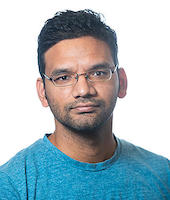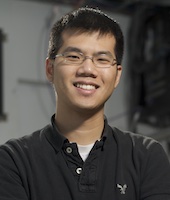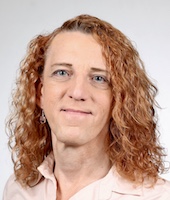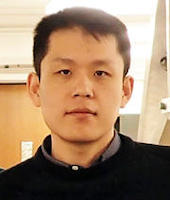This page lists the keynote speakers for the plenary session on Tuesday, September 12.
 |
Swarup ChinaChemist Post ALS-U Science Perspective Keynote Speaker in Earth & Environmental Systems Bio His major areas of research interest are the physical and chemical properties of atmospheric aerosols, atmospheric aerosol chemistry and heterogeneous ice nucleation. Swarup utilizes microscopy, spectroscopy and high-resolution mass spectrometry techniques to study atmospheric processes. He studies chemical aging of atmospheric particle through multi-phase atmospheric chemistry and to investigate the effect of physiochemical properties of complex atmospheric particles on heterogeneous ice nucleation and optical properties. He aims to better understand the physical chemistry of atmospheric particles controlling aerosol-cloud interactions. Abstract Atmospheric aerosol affects the climate directly by scattering and absorbing sunlight and indirectly by participating in warm and cold cloud formation. Particle size distribution and their chemical composition influence the optical properties of aerosol and their ability to form warm and cold cloud formation. The vertical distribution of different atmospheric aerosol species and their atmospheric processing can impact the atmospheric thermal structure, cloud dynamics and regional to global circulation systems. Detailed measurements of single particle aerosol composition using chemical imaging techniques as a function of altitude are limited but needed. To improve the understanding of impacts of the vertical distribution of aerosol chemical composition, we perform a detailed physicochemical characterization of aerosol particles sampled during different field campaigns. We utilized the high-resolution microscopy and X-ray spectroscopy techniques to probe their physicochemical properties. I will highlight results from recent field studies. |
 |
Will ChuehAssociate Professor and Faculty Scientist Shirley Award Winner Bio Will Chueh is an Associate Professor in the Department of Materials Science and Engineering, a Senior Fellow of the Precourt Institute for Energy at Stanford University, and a faculty scientist at SLAC National Accelerator Laboratory. He leads a group of more than thirty researchers tackling the challenge of decarbonizing various energy transformation pathways, and directs SLAC-Stanford Battery Center and Stanford’s StorageX Initiative that builds academic-industrial partnerships to accelerate the electrification of transportation and the penetration of intermittent renewable electricity in energy systems. He received his BS in applied physics, and his MS and PhD in materials science from Caltech. Prior to joining Stanford in 2012, he was a Distinguished Truman Fellow at Sandia National Laboratories. Chueh has received numerous honors, including the MRS Outstanding Young Investigator Award (2018), Volkswagen/BASF Science Award Electrochemistry (2016), Camille Dreyfus Teacher-Scholar Award (2016), Sloan Research Fellowship (2016), NSF CAREER Award (2015), Solid State Ionics Young Scientist Award (2013), and Caltech Demetriades-Tsafka-Kokkalis Prize in Energy (2012)). In 2012, he was named as one of the “Top 35 Innovators Under the Age of 35” by MIT’s Technology Review. He serves on the editorial boards of numerous journals including ACS Nano and Energy & Environmental Science. |
 |
Emiley A. Eloe-FadroshMetagenome Program Lead Post ALS-U Science Perspective Keynote Speaker in Biosciences Bio Emiley Eloe-Fadrosh is a Staff Scientist at Berkeley Lab where she heads the Metagenome Program at the Department of Energy’s (DOE) Joint Genome Institute and also leads the DOE’s multi-lab National Microbiome Data Collaborative. Her research focuses on leveraging genome-resolved metagenomic approaches to identify and characterize genomic information from uncultivated microbes and viruses. She serves on the Board of the Genomic Standards Consortium and is on the Steering Committee for the International Metagenomics and Microbiome Standards Alliance. Abstract Metagenomics is a method to sample the genomic content of microbes in the wild and has revealed a vast diversity across soil, aquatic, and host-associated systems. At the Joint Genome Institute (JGI), a DOE User Facility, we scale sequencing and computational tools to characterize this microbial diversity to better understand how microbes contribute to Earth’s biogeochemical cycles and ecosystem processes. Here, I will discuss how we advance metagenome sequencing technologies for cataloging microbial diversity and functional capacity, and will provide ideas on future collaborative opportunities with the ASL-U research community to advance the microbial sciences. |
 |
Dava KeavneyProgram Manager for X-Ray and Neutron Scattering Facilities Bio Dr. Dava Keavney is Program Manager for X-ray Light Sources and Neutron Scattering Facilities in the Scientific User Facilities Division of BES, with a primary responsibility for the five X-ray facilities in BES’ portfolio. She joined the Office of Science in June of 2022. From 2001 to 2019, she was an instrument scientist at the Advanced Photon Source (APS) at Argonne National Laboratory. There, she built user communities around magnetic spectroscopy, imaging, and time-resolved techniques in condensed matter physics and materials science, focusing on magnetic materials, multifunctional oxides, and semiconductors. She was also integral to beamline operations, user support, instrument development, and upgrade activities. In 2019, Dr. Keavney left APS to pursue a two-year Science and Technology Policy Fellowship with the American Association for the Advancement of Science, with a placement in the Bureau of Energy Resources of the U.S. Department of State, supporting international efforts to promote diversified supply chains for clean energy minerals and robust standards for greenhouse gas emissions measurement and accounting. Following her fellowship, she joined the Department of Energy’s Office of Energy Efficiency and Renewable Energy in the Advanced Manufacturing Office (AMO) for one year as a contractor, providing technical and strategic planning support for the AMO leadership team and helping to promote decarbonization, energy efficiency, and greenhouse gas emissions reductions in industry. Dr. Keavney earned her Ph.D. in experimental condensed matter physics from the Johns Hopkins University in Baltimore, MD, followed by a postdoctoral appointment in Argonne National Laboratory’s Materials Science Division. |
 |
Sarah TolbertDistinguished Professor in the Department of Chemistry and Biochemistry Post ALS-U Science Perspective Keynote Speaker in Energy Sciences Bio Sarah H. Tolbert is a Distinguished Professor in the Departments of Chemistry and Biochemistry and Materials Science and Engineering at UCLA. Her research focuses on controlling nanometer-scale architecture in solution-processed nanomaterials to generate unique optical, electronic, magnetic, structural, and electrochemical properties. She has published over 200 scholarly research article and has 20 patents focusing on electrochemical energy storage, organic electronics, nanomagnetics, nanoscale control of thermal conductivity, and new ultra-hard materials. She also serves as the faculty direct for a program aimed at bringing nano-concepts to schools, students, and the general public throughout the greater LA area. Professor Tolbert is the recipient of a number of awards including the American Chemical Society Henry H. Storch Award in Energy Chemistry, Fellow of the Royal Society of Chemistry, an NSF Special Creativity Award, the ACS R.A. Glen Award, and the UCLA Diversity, Equity, and Inclusion Award. She directs the DOE Energy Frontier Research Center on Synthetic Control Across Length-scales for Advancing Rechargeables (SCALAR). Abstract Increasing both the capacity and charging speed of batteries is key to enabling many promising energy technologies, including increased use of renewable energy, regenerative energy storage, and ubiquitous access to electric vehicles (EVs). For example, while a lack of fast charging stations is often cited as the main reason for long EV charging times, the reality is that repeated fast charging is damaging to most conventional batteries. To address this problem, new electrode materials are needed. In the first part of this talk, we examine ways to use nanostructured electrode materials to enable fast charging. We specifically focus on nanoporous materials, because the combination of nanoscale structure and porosity can produce a very desirable combination of electrical connectivity, electrolyte access to the interior of the material, and short solid-state diffusion lengths for lithium ions, all of which facilitate fast charge/discharge kinetics. Using operando diffraction collected during electrochemical cycling, we further find that many nanoscale materials show suppression of intercalation induced phase transition that can cause kinetic limitations in bulk materials. In some materials, controlled disorder can further suppresses those transitions. Indeed, a combination of X-ray pair distribution function analysis and operando XRD indicate that by controlling size and disorder, practical fast charging energy storage devices can be realized. In the second part of the talk, we use similar nanoporous architectures to improve stability in high capacity alloy anodes. Using main group metals such as Sn, Sb, and SbSn in combination with operando transmission X-ray microscopy (TXM), we explore how nanoscale architecture can be used to stabilize materials with very large cycling induced volume expansion against cracking. |
 |
Suyang XuAssistant Professor of Chemistry Post ALS-U Science Perspective Keynote Speaker in Condensed Matter and Quantum Materials Bio Suyang Xu received PhD in the Physics Department of Princeton University under the supervision of Prof. M. Zahid Hasan. During his PhD, Xu experimentally realized a wide range of new topological phases of matter, including the discovery of the Weyl semimetal in the TaAs class of material, which was selected as a top10 breakthrough in physics in 2015. In 2016, Xu moved to MIT Physics for postdoc under the supervision of Prof. Nuh Gedik. There, Xu pioneered in nonlinear optical studies of topological materials including photocurrents, nonlinear Hall and second-harmonic generation. In 2020, Xu started his independent career in the department of Chemistry and Chemical Biology at Harvard as an assistant professor. He has been working on discovering new 2D topological materials. Abstract One of the most important landmarks of condensed matter physics is the development of the electronic band structure. Despite the remarkable success, the band structure (the E-k dispersion) is incomplete. The geometrical properties of the electron Bloch wavefunction is becoming increasingly important. Quantum geometry is crucial in understanding topological materials and in probing and even controlling novel ordered phases and correlated states. In this talk, I will present our surprising observation of helicity-dependent optical control of the antiferromagnetic (AFM) order. AFMs have zero net magnetization M, so AFM domains are immune to perturbing magnetic field, inspiring robust magnetic storage. However, the robustness also means that AFM order is extremely difficult. We found that our optical control has a quantum geometrical origin, the optical Axion electrodynamics enabled by the real space dipole of Berry curvature. Going from there, I will talk more broadly about the various geometrical properties of quantum materials and how they may be relevant to the next generation ALS. |